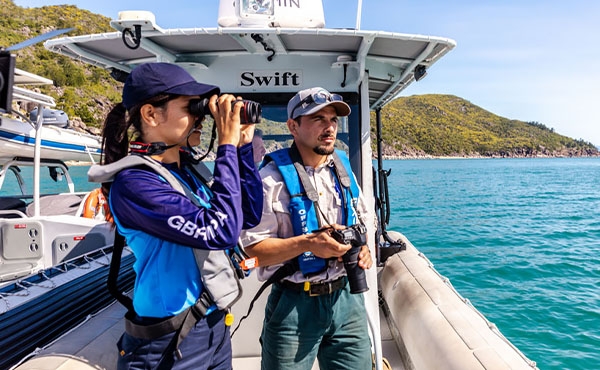Fishing, both recreationally and commercially, is the main extractive use that occurs in the Region and is jointly managed by Australian and Queensland governments. Viable commercial and recreational fishing depends on a healthy ecosystem.
The main management tool for commercial and recreational fishing is the Fisheries Act 1994 (Qld) (Fisheries Act) and associated fisheries regulations. Commercial fisheries are regulated primarily through a combination of licences and associated quota allocations, management plans and strategies, as well as zoning and permits for harvest fishers (Box 7.2). The setting of quotas and rules on fishing activities is informed by a range of fishery and species-based assessments, including ecological risk assessments, stock assessments and harvest strategies. Additionally, for fisheries involved with overseas export of product, assessments are required under the EPBC Act. Controls for commercial fisheries are both: inputs based, aiming to control fishing effort, gear and location, together with reporting requirements; and output based, with many fisheries having individual transferrable quotas for species or prescribed commercial catch limits. Recreational fisheries are managed spatially through the Great Barrier Reef Marine Park Zoning Plan 2003 (Zoning Plan) 1183 and regulated through output controls such as bag and size limits and restrictions on the types and number of fishing apparatus used. Commercial fisheries are differentiated based on their equipment and or target species. These controls are also informed through fishery or species-based assessments.
The Australian and Queensland governments have interrelated roles and responsibilities and managers across relevant agencies have a good understanding of values, impacts and threats to the Region related to fishing. The Queensland Department of Agriculture and Fisheries focuses on sustainable catch loads, the Reef Authority focuses on direct-use impacts to the Reef ecosystem, and the Department of Climate Change, Energy, the Environment and Water focuses on protected species and the environmental performance of fisheries. Each agency’s focus reduces potential overlap between agencies and jurisdictions. However, it creates potential inconsistencies in the management of fishing activities where there are 3 different regulatory interests.


